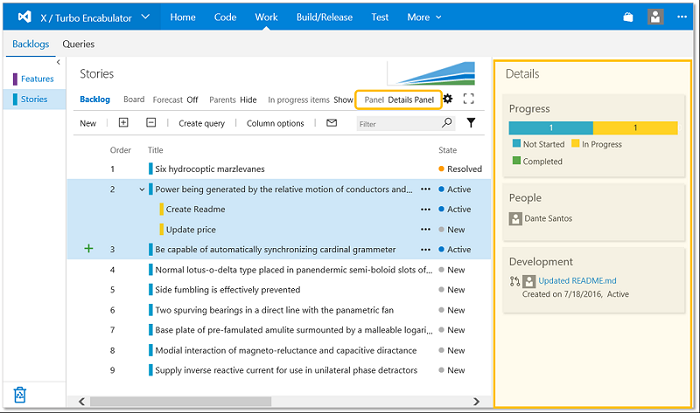

- #INTRODUCING MICROSOFT TEAM FOUNDATION SERVER 2017 INSTALL#
- #INTRODUCING MICROSOFT TEAM FOUNDATION SERVER 2017 UPGRADE#
- #INTRODUCING MICROSOFT TEAM FOUNDATION SERVER 2017 WINDOWS 10#
- #INTRODUCING MICROSOFT TEAM FOUNDATION SERVER 2017 WINDOWS 8.1#

#INTRODUCING MICROSOFT TEAM FOUNDATION SERVER 2017 INSTALL#
Install Extensions for SharePoint Products on all farms. If you have SharePoint integration (Supported versions SP 20) ensure you install the Extensions for SharePoint products 2017 on all farms. Here, the encryption key is restored.Įnsure ReportManager and Reports page are valid, browse-able and working, Report Server Databases ( ReportServer and ReportServerTempDB) must be backed up, along with the encryption key and restored to the newer SSRS. However, if you are moving to newer version/different hardware, you need to manually set them up prior to upgrade.
#INTRODUCING MICROSOFT TEAM FOUNDATION SERVER 2017 UPGRADE#
This is simpler in case of an in-place upgrade (provided SQL and SP versions are compatible with TFS 2017) There are not many changes needed. If your instance has SSRS Reporting and SharePoint, you need to perform additional steps before upgrading TFS. Reporting and SharePoint – Pre-upgrade Preparation. – Local Administrator on the Application Tier.Įnsure you have Report Manager and Local Admin on the report server permissions.Įnsure you have ServerAdmin Privilege on the Analysis Instance.Įnsure the account used for the upgrade is a Farm Admin. The Account running the upgrade needs the following permissions. Windows 7 (minimum SP1) (Home Premium, Professional, Enterprise, Ultimate)
#INTRODUCING MICROSOFT TEAM FOUNDATION SERVER 2017 WINDOWS 8.1#
Windows 8.1 (Basic, Professional, Enterprise)
#INTRODUCING MICROSOFT TEAM FOUNDATION SERVER 2017 WINDOWS 10#
Windows 10 (Home, Professional, Enterprise) Windows Server 2008 R2 (minimum SP1) (Standard, Enterprise, Datacenter) Windows Server 2012 (Essentials, Standard, Datacenter) Windows Server 2012 R2 (Essentials, Standard, Datacenter)

Be sure to check the article to see requirements for Visual Studio, Proxy, SharePoint etc., May require you to upgrade hardware or software. TFS Clients caches the ID on client machines. Note: Please use Production upgrade when you’re doing the final upgrade of production. (Once you are ready for upgrade, restore the databases again and use this mode) We have a new step-by-step article for in-place upgrade The database to 2017 version. The intent is to test upgrade on a different server. You cannot have 2 different versions of TFS on the same server! Note: This must be done on a copy of TFS databases on a separate server. You can use this to simultaneously test your TFS 2017 on another hardware while continue to use your existing older TFS up) This process test upgrades the databases. (Upgrade on the same hardware/OS over existing Application Tier and Data Tier Servers) Your TFS databases must be at least at the


 0 kommentar(er)
0 kommentar(er)
